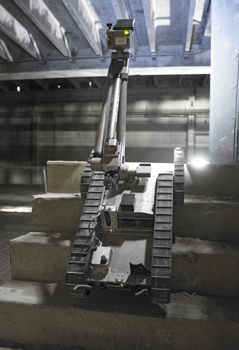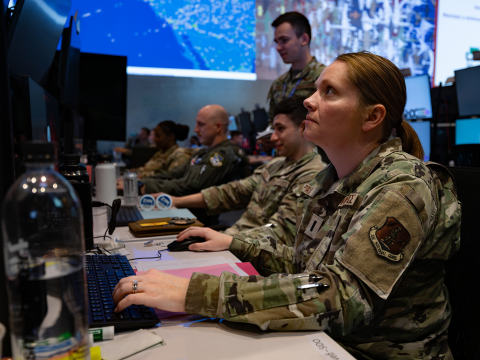Robots Roll Toward More Missions
The U.S. Naval Sea Systems Command recently invested almost $8 million in upgrades to current explosive ordnance disposal robots to improve their usefulness to operators. These enhancements also could benefit troops in other mission areas.
 |
| The iRobot Packbot 510 equipped with the User Assist Package. |
Robots are becoming increasingly important on the battlefield as both a way to save lives and to reduce costs in certain scenarios. The U.S. Naval Sea Systems Command (NAVSEA) recently invested almost $8 million in upgrades to current explosive ordnance disposal (EOD) robots to improve their usefulness to operators. EOD is a common field for robotic assistance, offering a means to disarm weapons without risking human lives.
iRobot received the Navy contract to supply its Aware 2 software upgrades and advanced sensor suites for 248 Man Transportable Robotic System (MTRS) MK1 MOD 1 robots, which are modified 510 Packbots. According to a NAVSEA official, the sensors will provide enhanced situational awareness by adding a wide-angle-view video camera, a thermal camera and Global Positioning System capabilities to the platforms. Deliveries should be complete by November. Warfighters will have immediate access to the improvements. The hardware is plug-and-play, so pieces can be added to or removed from the robots as missions demand.
The upgrades also will introduce semi-autonomous features through the User Assist Package, allowing operators to focus more on missions than on inputting commands. These features include the capabilities to self-right themselves and to retro-traverse to restore communications. "The self-righting capability is important to the EOD community because it will help prevent putting EOD technicians in harm's way," the official explains. The enhancement is designed to detect when a robot has flipped over downrange and to make corrections without operators having to leave a secure area, exposing them to enemy attack to recover the robotic platform.
In addition, the added features will increase operators' situational awareness of the robot platforms along with providing enhanced capabilities to conduct EOD missions. Changes to the core software streamline use by introducing hot-button keys that allow experienced operators to go quickly through menus and to determine more easily if the robots are performing tasks, such as gripping an object. Operators also can input unique poses instead of choosing from a list of preset ones.
Other military members could benefit from the developments as well. Tom Phelps, iRobot's director of Unmanned Ground Vehicles products, explains that, "When we developed this upgrade package, we were really looking at how to make the [Packbot 510] more effective as a tool during EOD and infantry missions." Nontraditional users such as guards at checkpoints, dismounted warfighters or special operations forces all could employ small robots to assist with their tasks. Phelps expects robot usage to increase because the tools have proven their value. "In the future, robotics will continue to expand their mission," he adds.
Moving forward, large and small robots also may work together in robot teams. Users often regard robots as specific to certain missions. The robotics field in general and iRobot in particular are altering their focus to create a family of robot solutions and adding third-party sensors to platforms, Phelps says. They foresee introducing interoperability between platforms as a key to meeting the future needs of the military.
Full and semi-autonomy also will grow in importance. The industry is taking incremental steps to familiarize the user community with those capabilities. "The government clearly has autonomy on the road map," Phelps states. Many solutions will take time to develop then vet through the government cycle, but near-term options include gesture control, voice control and control of multiple robots by a single person.




Comments